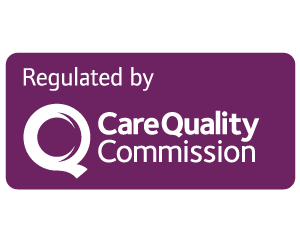FAQs
Being referred to us means your dentist cares about the quality of the treatment you receive.
Most dentists understand that specialised equipment, training and expertise are needed to provide predictable root canal treatment.
When carried out to the highest standards, root canal treatment enjoys very high success rates.
What Is Endodontics?
Endodontics is derived from the two Greek words – endo (meaning “within”) and odons (meaning “tooth”). Endodontics is generally known as root canal treatment and is the prevention, diagnosis and treatment of disease or injury to the dental pulp (the nerve and blood vessels within the tooth).

What causes disease or injury to the pulp?
The most common causes are deep decay, deep fillings, trauma (a knock to the tooth) and cracks.
What is the result after bacteria enter the tooth?
When the living tissue within a tooth (pulp) is exposed to bacteria an infection will occur. In time the bacteria pass down the root canals and an infection builds up at the end of the root. Ultimately an abscess forms leading to destruction of the bone surrounding the root.
Symptoms can range widely and include: severe pain with pressure, lingering aching after cold and especially hot drinks, deep throbbing toothache and swellings of the gum or face. Like many disease processes it is very common, however, for there to be no symptoms at all for long periods of time.
Why don’t antibiotics cure the infection?
Antibiotics travel inside the bloodstream to the area of an infection. When a tooth becomes infected, it dies as the blood vessels in the tooth degenerate. So there is no blood supply to allow the antibiotics to get to the infection. This is why antibiotics do not work for dental infections.
Antibiotics may be used to manage extreme toothache and swellings but the antibiotics are only working around the tooth. This is called “palliative treatment”, as it is the symptoms, not the cause, that the antibiotics are treating. The cause can only be treated with root canal treatment or removal of the tooth.
What does the treatment involve?
The infected dental pulp is cleaned away, the inside of the roots (the root canals) are also cleaned and enlarged. The root canal system is then sealed (or filled) to prevent infection from seeping into the root canals again.
Where possible we try to complete all the treatment in one visit. Sometimes we need two visits, if so; all the cleaning is done on the first visit and filling of the canals is done on the second visit. Click on the graphic here to enlarge it and see a detailed description of the procedure.

What are the alternatives?
The only alternative is to have the tooth removed. This can lead to surrounding teeth drifting into the gap and causing a whole range of further problems.
Replacing a lost tooth with a fixed bridge or dental implant may be possible, but there are significant disadvantages to both these options. Keeping your natural tooth will be cheaper, more comfortable, and easier to maintain than a bridge or implant.
Will it hurt?
No. The modern local anaesthetics we use are very effective. We also use special techniques when administering the local to make it even more effective.
Due to the length of the procedure and the comfort of our dental chair, a great many people actually fall sleep during the treatment.
What about after the local wears off ?
It is quite normal for the tooth and area around it to be quite uncomfortable and tender for a few days afterwards. Over-the counter pain killers such as Ibuprofen and/or Paracetamol will generally controll this discomfort. In a very small percentage of cases, a swelling can develope around the tooth within a few days of treatment. This can be disconcerting, however, it has no bearing on the success of the treatment and is mostly self-correcting. However, antibiotics are sometimes used to resolve the swelling.
What filling material will I have in my tooth after the root treatment ?
It is very important that the tooth is well protected against bacterial ingress following the root treatment. We therfore finish all treatment by filling the tooth with a permanent, hard-wearing material (white whenever possible). If treatment is performed over two visits, then a strong temporary white material is used for the inter-appointment period – normally four weeks.
What about putting a crown on the tooth ?
Following root canal treatment the tooth will be a little weaker than before. Back teeth are exposed to heavy chewing forces and many will benifit from having a protective crown (sometimes called a “cap”) and this will be provided by your own dentist. Generally, this is best having done within a month or so. Front teeth seldom need to be crowned after the root filling and white filling will generally suffice. If your tooth already has a crown on it, we mostly work through the crown and fill the access opening in afterwards so you won’t need a new crown, unless it requires replacing if there is deep decay around it.
Will the root canal treatment discolour the tooth?
Darkening of a tooth is highly unlikely, especially when the root canal treatment has been performed to a high standard.
Bleaching such teeth from the inside will predictably solve the problem. Internal bleaching of teeth is a complex procedure and many dentists prefer to have Henk carry it out.
Can treatment be done under sedation?
We can provide an intravenous sedation service, however, due to the length of endodontic treatment visits, intravenous sedation significantly increases treatment costs. If you are very anxious about dental treatment then we can give you a prescription for an oral sedative and this generally works very well.
If you do take such medication, you will need someone to drive you to and from the treatment appointment.
Call Us for an Appointment
Make An Online Enquiry





